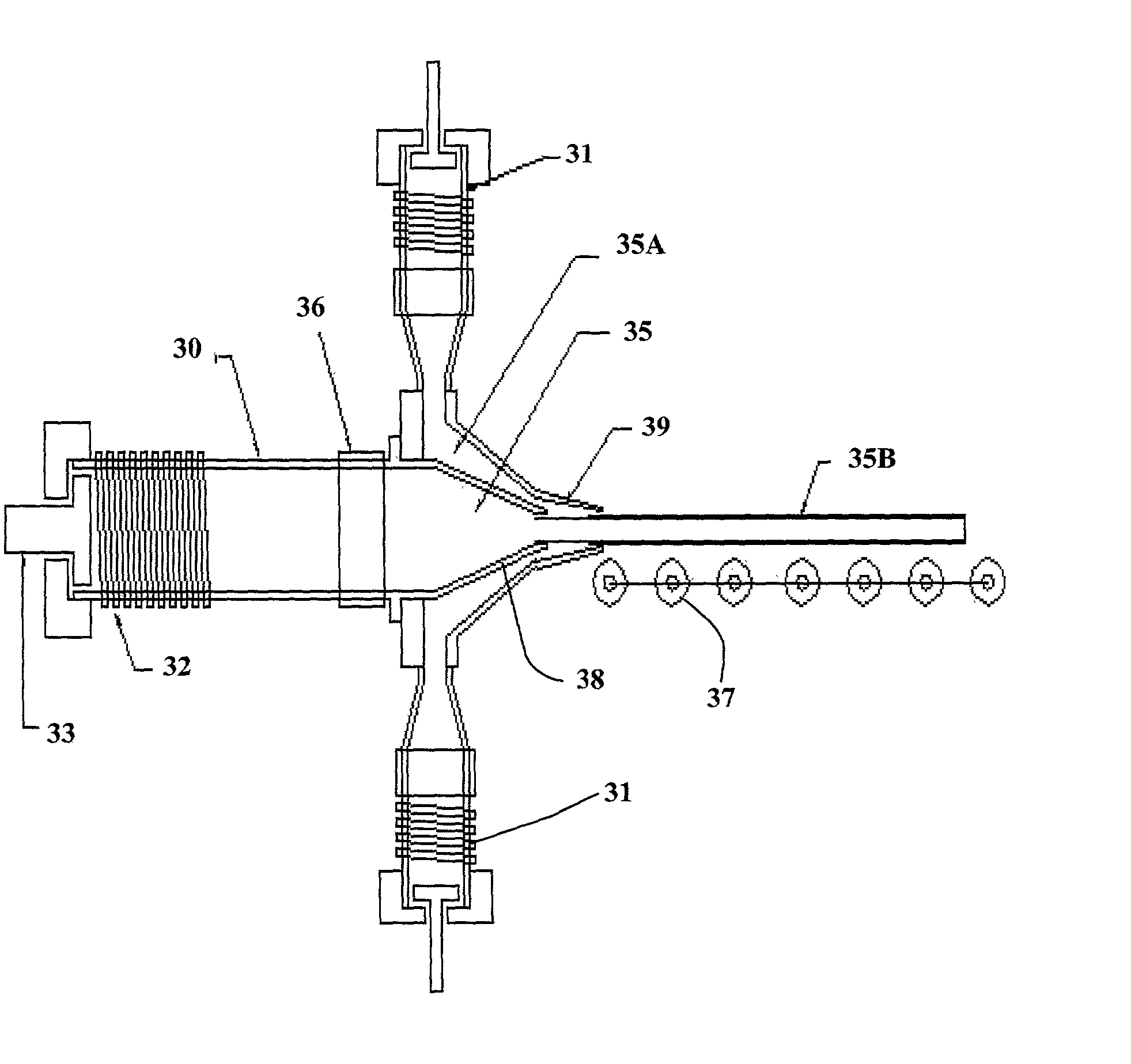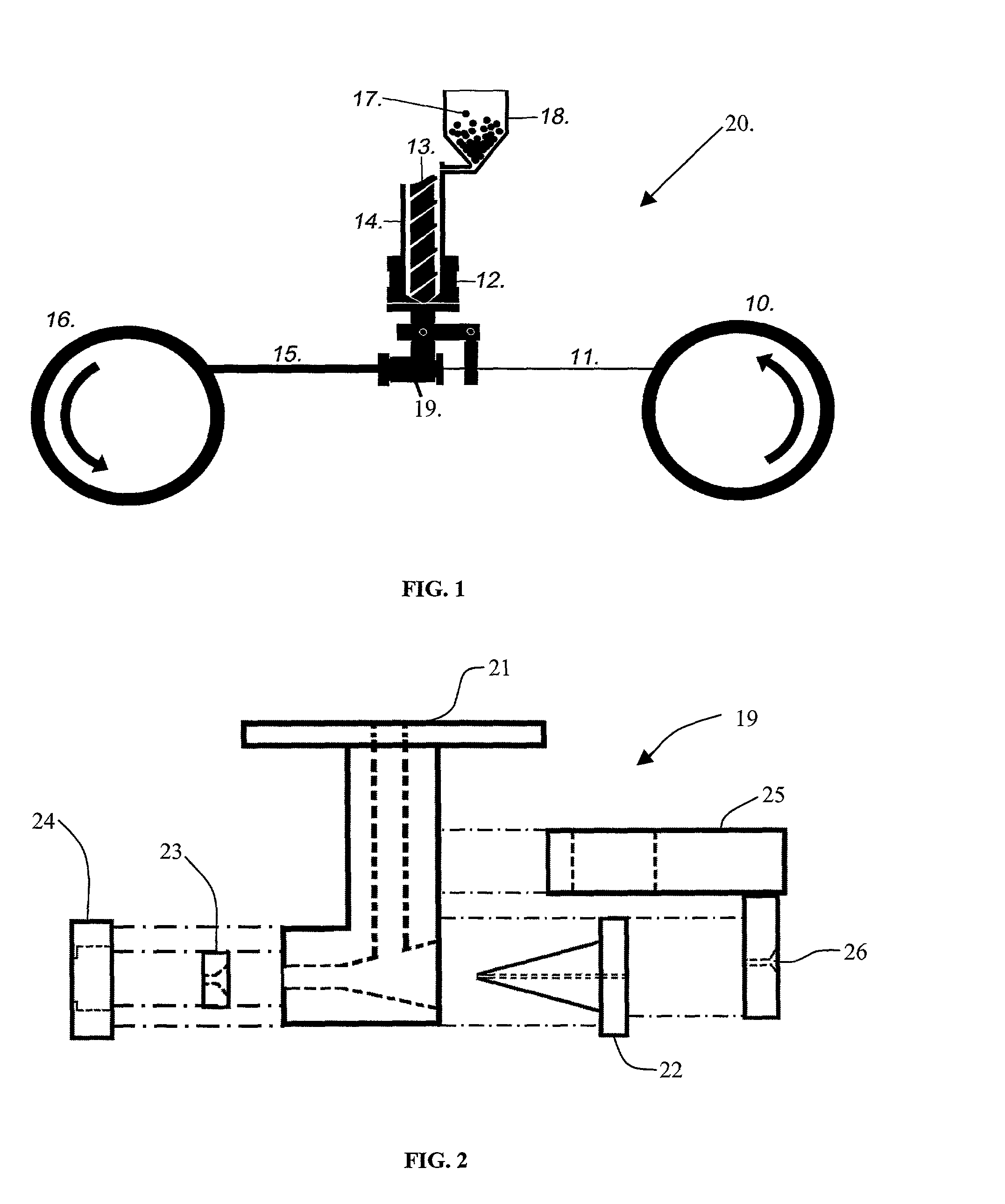Compositions and methods for preparing multiple-component composite materials
a composite material and composite material technology, applied in the direction of ceramic extrusion dies, turning machine accessories, drawing profiling tools, etc., can solve the problems of low fracture toughness, limited use of stress environments, and still remain extremely damage-intolerant, so as to improve manufacturing capabilities and low cost
- Summary
- Abstract
- Description
- Claims
- Application Information
AI Technical Summary
Benefits of technology
Problems solved by technology
Method used
Image
Examples
example 1
[0060] A tungsten carbide material with a low cobalt content (for example, between about 0% to 6% cobalt by weight) that exhibits the mechanical properties of high hardness, wear resistance, and low toughness can be combined with a tungsten carbide material with a relatively high cobalt content (for example, between about 6% to 20% cobalt by weight) that exhibits the mechanical properties of moderate hardness, wear resistance and high toughness. The resulting FM composite exhibits improved mechanical properties as compared to the individual carbide constituents, including high hardness, excellent fracture toughness, and wear and abrasion resistance.
[0061] A multifilament tungsten carbide-3%-cobalt alloy / tungsten carbide-6%-cobalt alloy multifilament FM composite is prepared in this example. Sinterable tungsten carbide-3%-cobalt powder (particle size of about 5 .mu.m) is blended with copolymer and plasticizer to form the FM core material according to the formulation shown in Table 2....
PUM
| Property | Measurement | Unit |
|---|---|---|
| Percent by volume | aaaaa | aaaaa |
| Fraction | aaaaa | aaaaa |
| Fraction | aaaaa | aaaaa |
Abstract
Description
Claims
Application Information
 Login to View More
Login to View More - R&D
- Intellectual Property
- Life Sciences
- Materials
- Tech Scout
- Unparalleled Data Quality
- Higher Quality Content
- 60% Fewer Hallucinations
Browse by: Latest US Patents, China's latest patents, Technical Efficacy Thesaurus, Application Domain, Technology Topic, Popular Technical Reports.
© 2025 PatSnap. All rights reserved.Legal|Privacy policy|Modern Slavery Act Transparency Statement|Sitemap|About US| Contact US: help@patsnap.com



